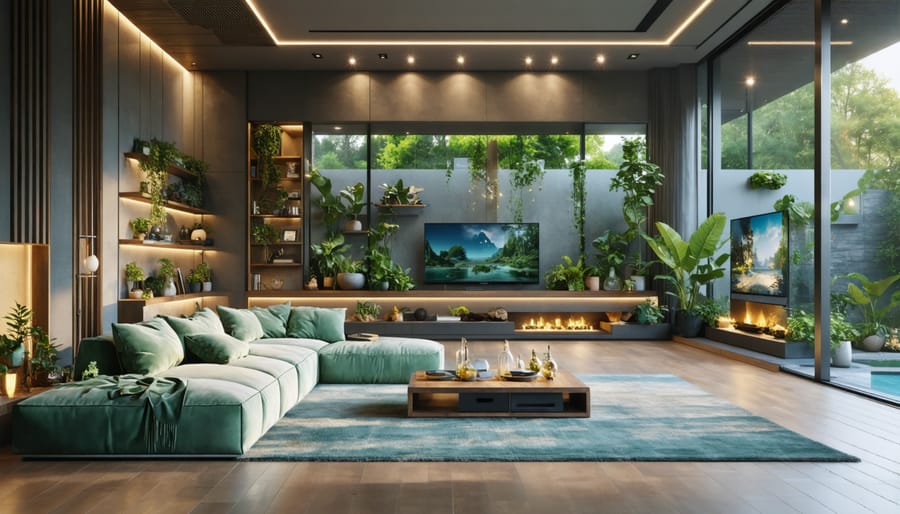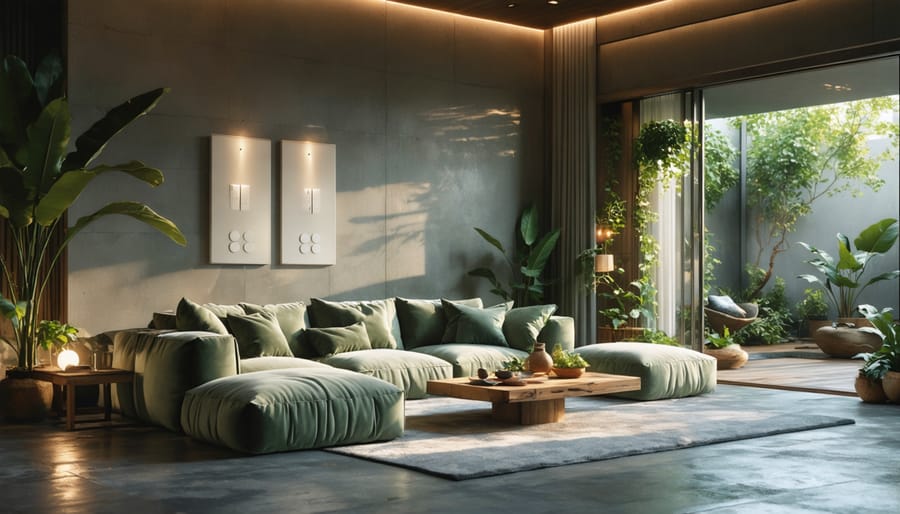Switch to LED bulbs, compact fluorescent lamps (CFLs), or other energy-efficient lighting options to reduce electricity consumption and costs. Maximize natural light by opening curtains and blinds during the day, and consider installing skylights or solar tubes to bring sunlight into dark spaces. Invest in smart lighting systems with features like motion sensors, dimmers, and programmable schedules to automatically adjust lighting based on occupancy and time of day, optimizing sustainable energy use. Choose light fixtures and bulbs with the ENERGY STAR label, which certifies their superior energy efficiency and performance compared to standard products.
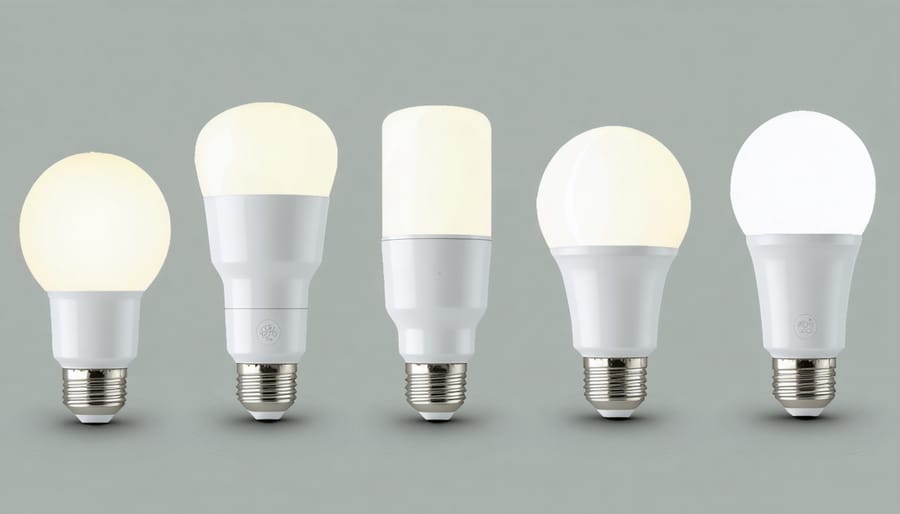
LED Lighting
Indoor LED Lighting
Indoor LED lighting offers a wide range of energy-efficient options for every room in your home. LED bulbs are a simple swap for traditional incandescent bulbs, providing the same brightness with up to 90% less energy consumption. They also last much longer, reducing waste and saving you money in the long run. LED fixtures, such as recessed lights, pendant lights, and under-cabinet lighting, are designed to optimize the benefits of LED technology while adding style to your space. Smart LED lighting systems take energy savings a step further by allowing you to control your lights remotely, set schedules, and adjust brightness and color temperature to suit your needs and preferences. These systems can even integrate with other smart home devices for a truly automated and efficient lighting experience. By choosing indoor LED lighting solutions, you can enjoy a well-lit home while minimizing your environmental impact and energy costs.
Outdoor LED Lighting
Outdoor LED lighting offers a sustainable and attractive way to illuminate your exterior spaces. For landscaping, consider solar-powered path lights or spotlights to highlight trees, gardens, or water features. These energy-efficient options charge during the day and automatically turn on at night, providing a warm, inviting ambiance without increasing your electricity bill. When it comes to security lighting, motion-sensor LED floodlights are an excellent choice. They provide bright, targeted illumination when needed, deterring intruders and increasing safety around your home. For decorative purposes, string lights or lanterns with LED bulbs can create a cozy, enchanting atmosphere on patios, decks, or balconies. They consume minimal energy and often come with dimming capabilities or color-changing options. By incorporating outdoor LED lighting solutions, you can enhance your home’s curb appeal, improve security, and create inviting outdoor living spaces while minimizing your environmental impact and energy consumption.
Natural Daylighting Techniques
Maximizing natural light in your home not only reduces energy consumption but also creates a warm, inviting atmosphere. One effective technique is to strategically place windows to capture sunlight throughout the day. Consider installing windows on south-facing walls to bring in the most light, and use light-colored window treatments to reflect and diffuse the incoming rays. Skylights are another excellent option, particularly in rooms with limited wall space or access to windows. They allow light to flood in from above, brightening even the darkest corners of your home.
For spaces that receive direct sunlight, light shelves can help to redirect and distribute the light more evenly. These horizontal surfaces, typically installed above windows, bounce sunlight up to the ceiling and deeper into the room, reducing glare and improving overall illumination. Additionally, using reflective surfaces like mirrors and glossy tiles can amplify the effect of natural light, making your space feel larger and more open.
When planning your home’s layout, consider an open floor plan that allows light to flow freely between rooms. Use glass doors or translucent partitions to maintain privacy while still allowing light to pass through. By incorporating these natural daylighting techniques, you can create a home that is not only energy-efficient but also a beautiful, healthy, and inspiring place to live.
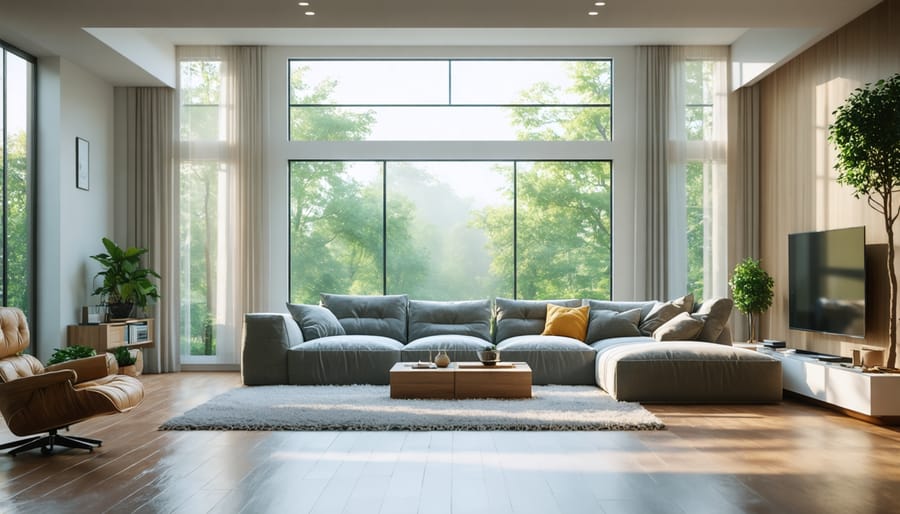
Occupancy Sensors and Timers
Occupancy sensors and timers are smart devices that can significantly reduce energy waste from lighting. These devices automatically turn lights off when a room is unoccupied or after a set period of time. Occupancy sensors detect motion or sound to determine if someone is in the room, while timers switch lights off after a preset duration.
By ensuring lights are only on when needed, these devices help cut down on unnecessary energy consumption. You no longer have to worry about forgetting to turn off lights when leaving a room or having them stay on all night. Occupancy sensors are particularly useful in rooms with variable usage patterns, like bathrooms, garages, or laundry rooms.
Timers are great for areas where lights are needed for a specific time, such as outdoor security lighting or bathroom ventilation fans. They provide the convenience of automatic shutoff without relying on motion detection.
Installing occupancy sensors and timers is a simple and effective way to make your home more energy-efficient. Plus, by reducing your lighting energy consumption, you can lower your electricity bills and save money in the long run. Pair these devices with energy monitoring systems for even greater insights and control over your home’s energy usage.
Smart Lighting Systems
DIY Smart Lighting
Setting up a DIY smart lighting system is easier than you might think. First, choose smart light bulbs that are compatible with your home’s existing fixtures and your preferred smart home platform (like Amazon Alexa or Google Home). Install the bulbs and download the corresponding app on your smartphone. Follow the app’s instructions to connect the bulbs to your Wi-Fi network and set up any desired schedules or automation. You can then control your lights remotely, set timers, and adjust brightness and color temperature for optimal energy efficiency and ambiance. To take it a step further, consider installing smart switches or plugs to control lamps or fixtures without smart bulb compatibility. With a little effort and creativity, you’ll have a customized, energy-saving smart lighting setup that enhances your home’s functionality and style.
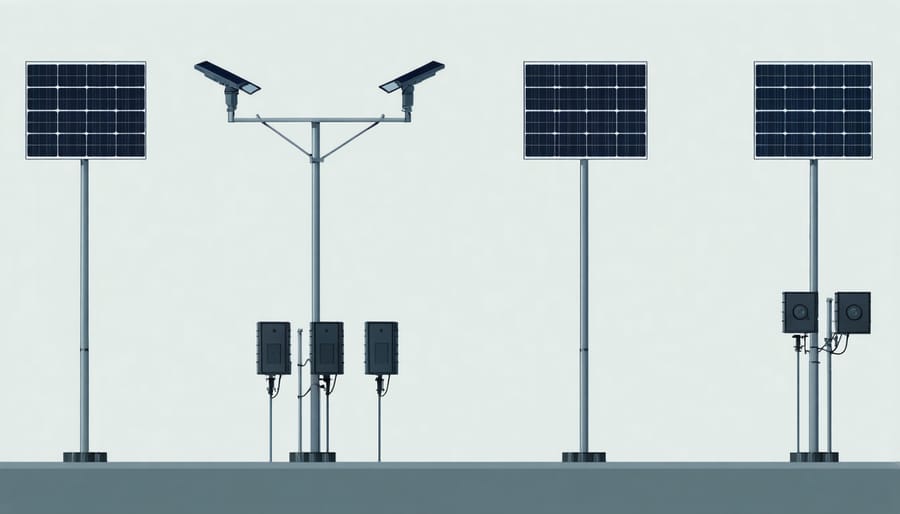
Solar-Powered Lighting
Solar-powered lighting harnesses the sun’s energy to illuminate your home, both inside and out. By installing solar panels or using solar-powered light fixtures, you can reduce your reliance on traditional electricity and lower your energy bills. Solar lighting is an eco-friendly choice that’s easy to implement and maintain.
For outdoor spaces, solar-powered path lights, wall-mounted fixtures, and string lights add ambiance and security without the need for wiring. They charge during the day and automatically turn on at night, making them a hassle-free option for landscaping and exterior design.
Indoors, solar tubes and skylights can bring natural light into your home, reducing the need for artificial lighting during the day. Solar-powered desk lamps, night lights, and even ceiling fans are available, allowing you to incorporate sustainable energy into your everyday life.
When choosing solar-powered lighting, look for products with high-efficiency solar cells and long-lasting, energy-efficient LED bulbs. With a wide range of styles and applications, solar lighting is a bright idea for any home looking to embrace sustainable energy solutions.
Energy-Efficient Lighting Design
When designing your home’s lighting plan, prioritizing energy efficiency can significantly reduce your carbon footprint and utility bills. Start by taking advantage of natural light wherever possible, using sheer curtains or adjustable blinds to control glare. Next, layer your lighting by combining ambient, task, and accent lighting to create a well-balanced, functional space without relying on a single, energy-guzzling overhead fixture.
Ambient lighting provides overall illumination and can be achieved through ceiling fixtures, wall sconces, or even strategically placed floor lamps. Task lighting focuses on specific areas where you need bright, direct light, such as desk lamps for a home office or under-cabinet lighting in the kitchen. Accent lighting highlights decorative features like artwork or architectural elements, adding depth and visual interest to a room.
When selecting light fixtures and bulbs, opt for energy efficiency with LED or CFL bulbs, which use 75-80% less energy than traditional incandescent bulbs. They also last much longer, reducing waste and replacement costs. Consider installing dimmer switches, which allow you to adjust light levels based on your needs and mood while saving energy.
Finally, incorporate smart lighting technology, such as programmable timers, motion sensors, and smartphone-controlled bulbs. These innovations make it easy to optimize your lighting schedule, ensure lights are only on when needed, and remotely manage your home’s lighting for maximum efficiency and convenience. By implementing these energy-efficient lighting design strategies, you’ll create a beautifully lit, eco-friendly home that’s both stylish and sustainable.
Conclusion
In conclusion, sustainable energy and lighting solutions offer a multitude of benefits for both your home and the environment. By implementing energy-efficient light bulbs, taking advantage of natural light, and utilizing smart lighting technology, you can significantly reduce your energy consumption and costs while creating a more comfortable living space. Additionally, exploring solar-powered lighting options and incorporating biophilic design principles can further enhance the sustainability and aesthetic appeal of your home.
As you embark on your journey towards a more eco-friendly and energy-efficient home, remember that every small change makes a difference. Start by assessing your current lighting situation and gradually making improvements that align with your budget and preferences. With a commitment to sustainability and a willingness to embrace new solutions, you can transform your home into a beacon of energy efficiency and environmental responsibility.
By adopting these sustainable lighting practices, you not only contribute to a greener future but also inspire others to do the same. Together, we can create a brighter, more sustainable world, one light bulb at a time.

